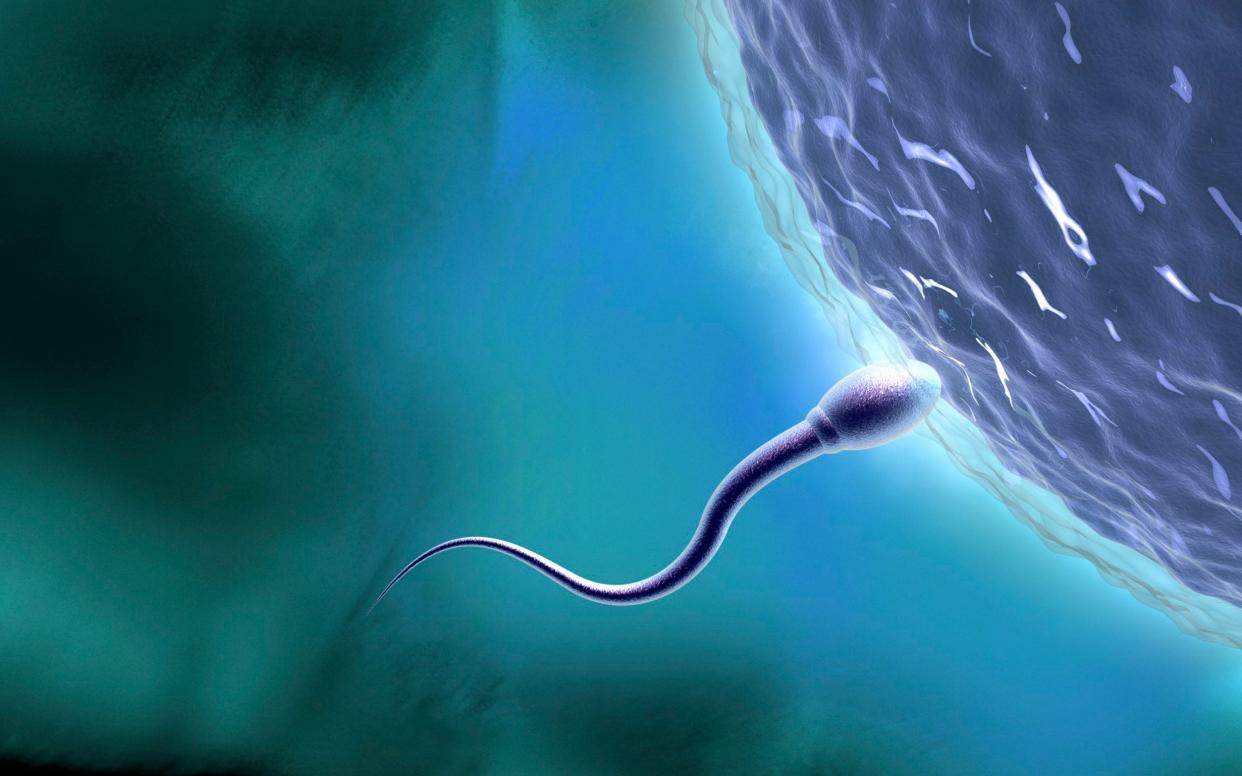More than half of sperm donations in the UK come from abroad

The majority of new sperm donors in the UK now come from abroad, new figures show
For the first time, more than half of those registering to donate are from overseas - with the US and Demark the greatest exporters to Britain, regulators have found.
Regulators said that in some cases, women were turning to imported sperm because they were unable to find a donor in this country.
Julia Chain, chairman of the Human Fertilisation and Embryology Authority (HFEA), said she was concerned that some were taking the “extremely risky” route of finding donors online, without the right checks being carried out.
The data show a tripling in the number of children born from donor sperm in the last 15 years, from under 900 in 2006 to over 2,800.
The watchdog said this was driven by single parents and women in same-sex relationships.
While demand has risen, the number of new sperm donors from the UK has fallen slightly, figures from the HFEA show.
Overseas donations rise to 52pc
For the first time, there were more new sperm donors from abroad than the UK in 2020, with 52 per cent from overseas.
A decade ago, when there were 475 new donations, one in five came from abroad.
Last year the figure was 772 - and the majority came from overseas.
While 400 new sperm donations were from overseas in 2020, there were 372 from the UK.
The most common country for export was the US, from where 27 per cent of donations came, along with 21 per cent from Denmark.
In such countries, expenses are more generous, while those considering using a sperm donor are able to leaf through catalogues of donors and select via particular physical attributes or occupations.
In Britain only “reasonable” expenses can be paid and such information is not made available.
Watchdog warns against online route
Regulators said some women were putting themselves and their future families at risk by trying to find sperm donors online.
Ms Chain said: “Some patients have told us that they had imported sperm for treatment due to difficulty finding an appropriate UK donor. I’m concerned that without appropriate access, there is a danger that people will turn to online donors which can be extremely risky.
“UK licensed clinics are legally required to ensure that donors, patients and any future children are protected.
“Clinics carry out rigorous health tests and take care of legal paperwork that ensures donors are not seen as the legal parent with all the rights and responsibilities that involves. They also must offer everyone involved counselling, so they are fully aware of the implications of their decision.
“This is why the HFEA encourages everyone who chooses donation to use a licensed clinic.”
Some of those choosing to obtain sperm from abroad thought it was less likely that their offspring would track down their biological father, officials suggested.
Demand for imported sperm driven by many factors
Ms Chain said: “The number of people choosing to donate sperm in the UK has remained consistent in recent years. However, sperm imported into, and used for donation in the UK has increased significantly. This could be due to a number of factors; availability of ethnically diverse donors, a donor’s anonymity status and a choice by the recipient to reduce their risk and of any donor-conceived children unintentionally meeting and starting relationships with any half-siblings.”
Experts said the increased demand for sperm donors from overseas could be driven by a number of factors, including increased availability of ethnically diverse donors.
They said the fact one could choose donors based on photographs, personal interests, and profession might appeal to some of those seeking to start a family, along with the reduced risk of coming into contact with a donor.
Under UK rules, donors are anonymous, regardless of where they come from, but at the age of 18, those born of donation can request identifying information about their donor such as full name, date of birth and last known address.
In total, donor conception of egg or sperm led to 4,100 births in 2019, compared with around 2,500 in 1993, the data show.

